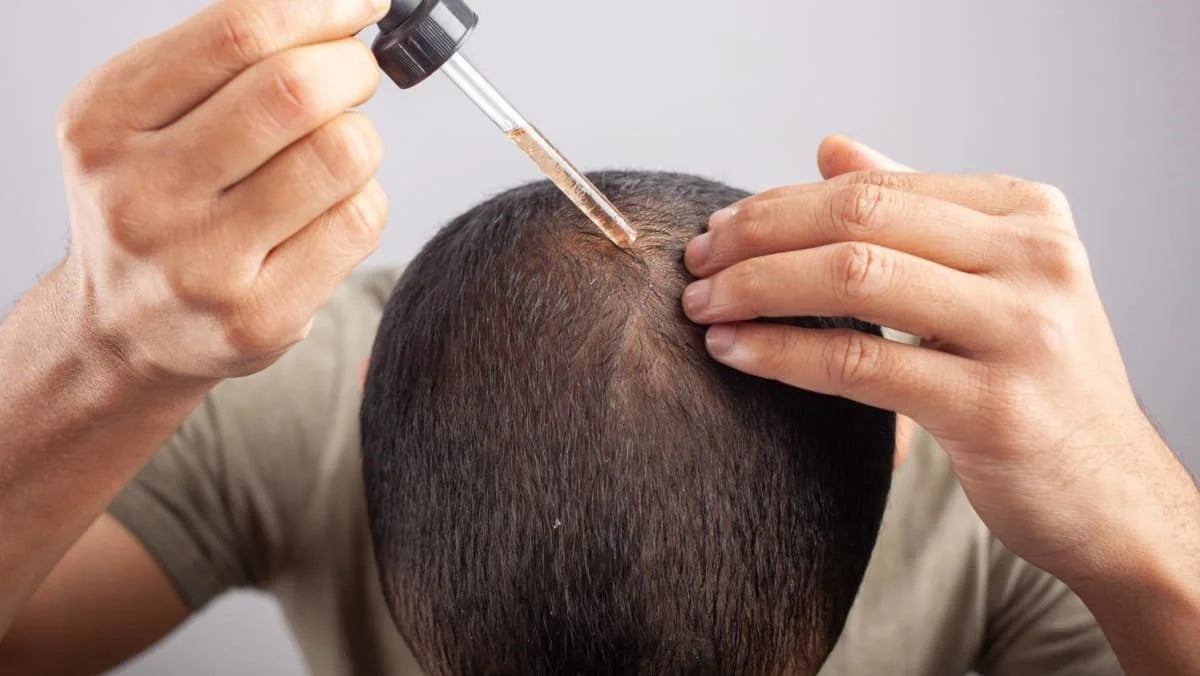Hair loss, also known as alopecia, is not a life-threatening concern, but it does take a toll on a person’s self-confidence. Hair fall can be accredited to several causes including genetics (androgenic alopecia), hormonal imbalance, and recovery from COVID-19. Luckily, if treatment is started early on, hair regrowth is possible. And for a long time, minoxidil has been the drug of choice to treat hair loss. Before we get into the nitty-gritty of minoxidil, let’s dive a little deeper into the types and causes of hair loss.
The switchover from normal hair growth to hair fall, and the role of minoxidil
Hair growth occurs in four stages- anagen (growing phase- 3-5 years long), catagen (transition phase- 10 days long), telogen (latent phase) and exogen (shedding phase). The exogen phase is the stage during which hair fall takes place, and typically you lose 50-100 strands each day.
Disturbance in this cycle causes more hair to fall out as compared to the number of hair strands that are regenerated. Androgenic alopecia is the most common type of hair loss. It occurs because of the male hormones or ‘androgens’, and it presents itself in two forms- male pattern hair loss (starting above temples), and female pattern hair loss (hair thinning all over the scalp). Other causes of hair loss can be an imbalance in the level of thyroid hormone, nutritional deficiency, using certain medications like oral contraceptives and warfarin, chemotherapy, and autoimmune disorders.
Minoxidil, originally discovered as an anti-hypertensive drug, had an interesting side effect- excessive hair growth. This serendipity led to prescribing minoxidil as the mainstay drug for androgenic alopecia as well as other patterns of alopecia.
Minoxidil is said to shorten the length of telogen and hastens the entry of follicles into anagen. This over-the-counter drug can be very effective if treatment is started early and used regularly daily.
The major downside of using minoxidil for treating alopecia is that it merely speeds up the hair cycle and almost certainly stimulates hair growth- but it does not treat the root cause of hair fall. So if you discontinue using minoxidil, its effects do subside and hair loss continues, making it a life-long, cumbersome commitment. Other side effects include facial hair growth, scalp irritation, and a change in the texture of your hair.
Are there any alternatives to minoxidil?
Luckily, there are a plethora of alternatives to minoxidil, which involve:
- Finasteride, a medicine used to treat benign prostatic hypertrophy, is now being used to treat male pattern hair loss. It blocks the conversion of testosterone (an androgen) into its active form (DHT), thus preventing hair loss and promoting new hair growth.
- Ketoconazole, an antifungal drug, can prove to be of immense help to treat hair loss, as it is shown to have anti-androgenic effects. However, minoxidil is preferred over ketoconazole as it shows a delayed improvement. If dandruff-associated hair loss is a concern, you must look into ketoconazole.
- Melatonin– topical application of melatonin, an important hormone involved in your sleep/wake cycle, is said to extend the growth stage, and also reverse UV damage caused to our hair. Additionally, melatonin is also said to stimulate hair growth.
- Biotin– if you’re facing hair-thinning or hair loss, biotin will be of much assistance in re-tuning your hair cycle, but only if you have a deficiency of this vitamin. Biotin deficiencies rarely occur because a.) The daily dietary requirement of biotin is already low, and b.) gut bacteria possess a mechanism to synthesize small amounts of biotin
- Rosemary oilcan prevent hair loss caused by DHT, but this claim is not accompanied by ample research to support this theory. In a study conducted in 2015, rosemary oil was concluded to be as effective as 2% minoxidil to treat male pattern hair loss.
- Corticosteroid injections(prednisolone) have been used to treat hair loss that is caused because of autoimmune disorders, but it can cause hirsutism or excessive growth of body hair.
- Reducing scalp tensionby styling your hair in protective hairstyles- loose ponytails and plaits instead of a high pony, and controlling or blocking the sources of stress (which causes hair pulling) can also have a significant effect on the amount of hair you lose.
There are numerous (and perhaps better) alternatives to minoxidil. With research going on at a fast pace, we will soon have a better option.


Share:
Do pumpkin seeds stop hair loss
POSTNATAL SKINCARE